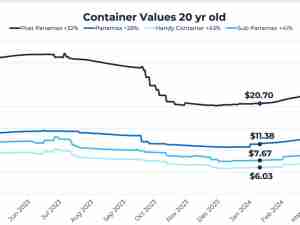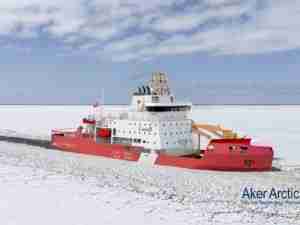Key insights:
1. The devastation caused by the earthquake in Turkey and Syria included damage to transportation infrastructure crucial to delivering aid.
a. The disaster damaged roads and bridges and shut down the southern Turkish port of Iskenderun as stacks of containers toppled and started a fire.
b. Rail service is disrupted in the region though major east-west traffic – which is concentrated in northern Turkey – will likely not be impacted.
c. Air cargo congestion is being reported at many smaller airports as passenger flights are canceled and arriving aid shipments begin to overwhelm handlers, though the major air hub in Istanbul remains open.
2. In the US, a 50-car train derailment in Ohio led to evacuation orders for people in the area and is delaying Midwest - Northeast trail shipments in both directions.
3. Transpac ocean rates were level last week while Asia - Europe prices fell 15% on falling demand.
4. Relative to ex-Asia trade, the transatlantic remains resilient with ocean rates more than 250% higher than in 2019. Carriers began shifting vessels to this lane as demand faded out of Asia, but reports that carriers have started removing capacity here too suggest that supply and demand are now mismatched on the transatlantic as well.
Ocean rates:
• Asia-US West Coast prices (FBX01 Weekly) dipped 1% to $1,307/FEU. This rate is 91% lower than the same time last year.
• Asia-US East Coast prices (FBX03 Weekly) were level at $2,652/FEU, and are 84% lower than rates for this week last year.
• Asia-N. Europe prices (FBX11 Weekly) decreased 15% to $2,920/FEU, and are 80% lower than rates for this week last year.
Analysis
The devastation caused by the earthquake in Turkey and Syria this week included serious damage to transportation infrastructure necessary first and foremost to bring aid to those in need.
The disaster damaged roads and bridges and shut down the southern Turkish port of Iskenderun until further notice as the quake toppled stacks of containers and caused a major fire. Rail service is also disrupted in parts of the region though major east-west traffic – which is concentrated in northern Turkey – will likely not be impacted.
Air cargo congestion is being reported at many smaller airports as passenger flights are canceled and arriving aid shipments begin to overwhelm handlers, though the major air hub in Istanbul remains open. The aid-driven increase in demand for air cargo into Turkey will likely push rates up.
In the US, a 50-car train derailment in Ohio which included hazardous materials led to evacuation orders for people in the area of the crash and is delaying Midwest - Northeast trail shipments in both directions.
In ocean freight, transpacific rates were level again last week, but remain well below 2019 levels as demand continues to decrease.
Lower volumes are leading to less congestion and more vessels arriving on time at US ports. Falling rates are also pushing smaller carriers – who started transpacific services when demand was surging – to exit the lane now. Some major carriers are even expressing concern that the combination of excess capacity and falling demand could lead to a price war.
Falling Asia - Europe volumes likely contributed to a 15% decrease in ocean rates on this lane last week, even as carriers increase the number of blanked sailings ex-Asia. The spike in blankings is also leading carriers to more slot-sharing agreements between rival alliances.
Relative to ex-Asia trade, transatlantic ocean volumes remain resilient and spot rates are still more than 250% higher than in 2019. But as demand fell on the other tradelanes, carriers rushed to move capacity to the transatlantic. The addition of vessels has helped push rates down 40% since August, and reports that carriers have recently started blanking sailings on this lane too, indicate they’ve now overshot demand levels.
In air cargo too, transatlantic demand is behaving differently than other lanes, as volumes in January were 6% higher than a year prior, while overall air imports to the US were down 2%. European import air volumes in January were 9% lower than in 2022 – marking the 13th consecutive monthly decline. Freightos Air Index Asia - Europe rates fell to $3.97/kg last week, a level 50% lower than a year ago.
But just as demand for air cargo falls, industry experts warn that freighter capacity could reach a decade-high in the near term, partially driven by the extreme growth in e-commerce earlier in the pandemic. Some players like FedEx are already taking painful steps to correct for the downturn in e-commerce demand important to air, by scaling back some domestic delivery services.









